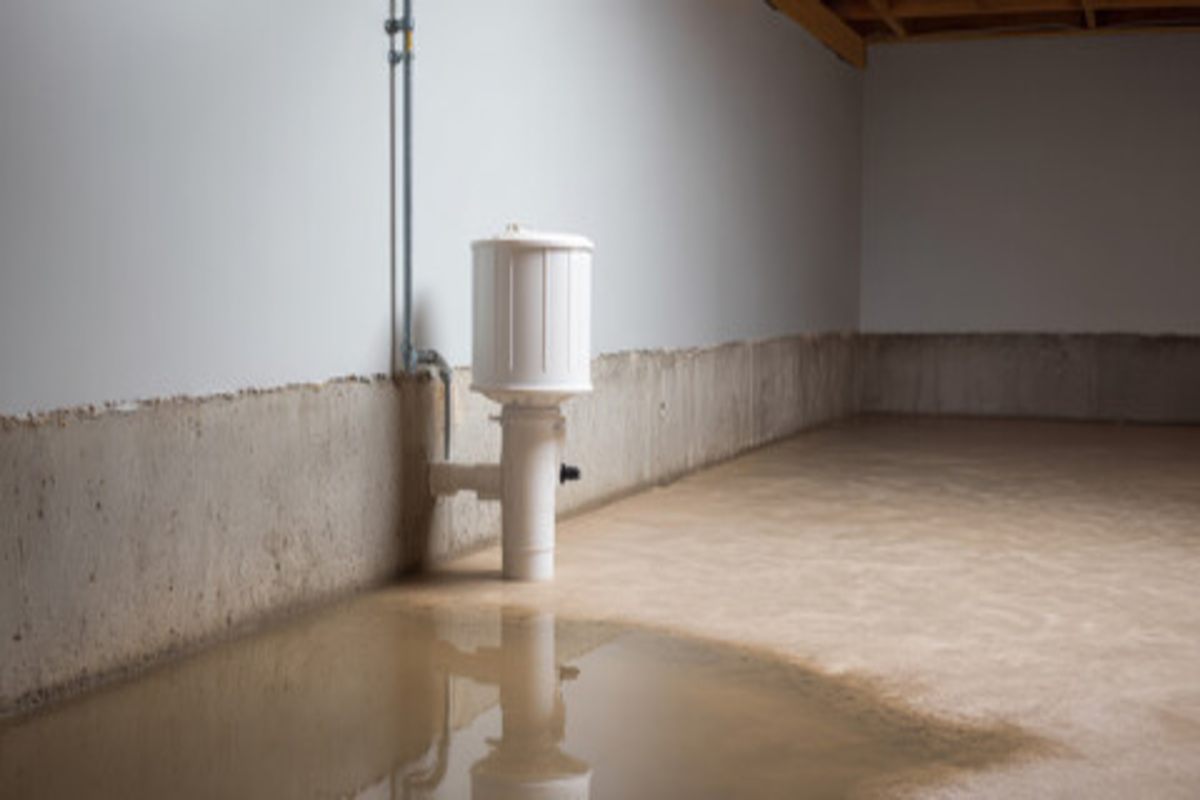When a heavy storm hits, your sump pump serves as your home’s first line of protection against basement flooding. Unfortunately, many homeowners don’t discover an issue with their system until water is already rising. We receive frequent calls from people asking how to ensure their sump pump is ready for storm season. The good news is that it doesn’t take much to avoid major damage if you act before the rain begins.
Below, we’ll explain the key steps we recommend for Kansas City homeowners who want to prevent water intrusion, mold growth, and costly repairs.
Why Sump Pump Maintenance Matters Before a Storm
The Risk of Waiting Too Long
Storm-related basement flooding is one of the most common issues we see in homes during spring and summer. When a sump pump fails or isn’t powerful enough to keep up with incoming water, damage can happen quickly. Floors, walls, furniture, and even the foundation are all at risk. Just a few inches of water can lead to thousands of dollars in repairs.
Common Issues We See
- Pumps that haven’t been tested in months
- Clogged discharge lines
- Burned-out motors
- Float switches stuck or misaligned
- Backup batteries that no longer hold a charge
These are all things we inspect and correct when preparing a home for storm season.
Signs Your Sump Pump May Need Attention
You don’t need to wait for a downpour to know something’s wrong. Here are some warning signs to watch for:
Odd Noises or Vibrations
A sump pump should run quietly. Grinding, rattling, or humming sounds could mean worn-out parts or a failing motor.
Running Constantly or Not At All
A properly functioning pump turns on when water reaches a certain level. If it cycles continuously or fails to activate, there’s likely a problem with the float or switch.
Signs of Rust or Corrosion
Any visible corrosion around the pump or battery terminals should be addressed immediately, as it can lead to mechanical failure or reduced performance.
Strong Odors or Mold Growth
If your pump isn’t removing water efficiently, it can result in musty odors or visible mold, both signs of lingering moisture in the basement.
How to Get Your Sump Pump Ready for Storm Season
This is one of the most important steps homeowners can take to protect their property. Here’s our standard checklist when preparing a system:
1. Test the Pump Function
We recommend pouring a bucket of water into the sump pit to confirm that the float rises and activates the pump. It should turn on quickly and remove the water without delay.
2. Clear the Discharge Line
Check that the discharge pipe is free of blockages and properly positioned to drain water away from the foundation. During winter, inspect it for cracks or frozen sections.
3. Inspect and Clean the Pit
Remove any debris, dirt, or silt from the pit. This keeps the intake clear and reduces the chance of clogs.
4. Check the Power Source
Ensure the pump is plugged into a ground-fault circuit interrupter (GFCI) outlet and that the cord is in good shape. If your pump is battery-powered or has a backup battery, check the charge level and replace if necessary.
5. Consider a Backup Pump or Alarm System
If your area is prone to severe storms or power outages, we often suggest installing a secondary backup pump or a water-powered pump. Some models also come with alerts that notify you by phone if the pump fails.
When to Call a Professional
Even if your sump pump seems to be working fine, it’s smart to have it professionally inspected at least once a year, preferably before the rainy season begins. At KC Pier, we’ve helped hundreds of homeowners make sure their sump systems are in top shape. We check everything from the pump’s capacity and drainage to the age of the equipment and its compatibility with your home’s water table.
If your home has a history of water issues or your sump pump is more than seven years old, we recommend replacing it before failure becomes a risk. We can help size the right unit for your home, install it cleanly, and ensure it’s equipped with the right safeguards.
Final Tips for Basement Flood Protection
Sump pumps are just one part of a smart water management plan. Here are a few other steps we advise our customers to take:
- Gutter maintenance: Keep gutters and downspouts clear so water flows away from the house.
- Grading: Make sure the ground slopes away from your foundation.
- Window wells: Cover and seal these to prevent water entry.
- Water alarms: Consider installing leak detection systems near water-prone areas.
Stay Ahead of Storm Season with Trusted Help
Getting your sump pump ready for storm season doesn’t have to be complicated. With a little preparation and the right support, you can keep your basement dry and your peace of mind intact.
If you’re unsure whether your system is ready or if you’ve already had water issues, KC Pier is here to help. We offer thorough sump pump inspections, upgrades, and full replacements across the Kansas City area. Contact us today to schedule your evaluation before the next big storm hits.
Protect your basement before it’s too late.

